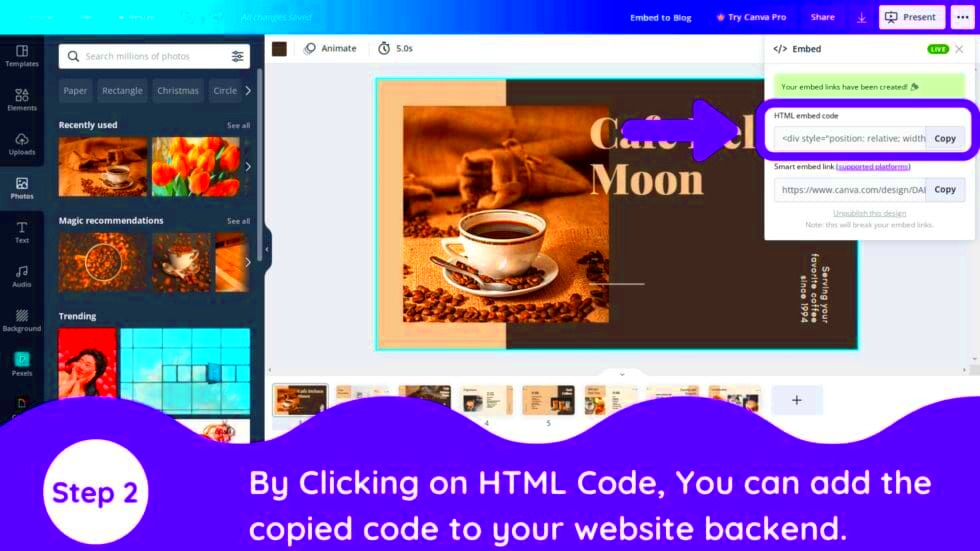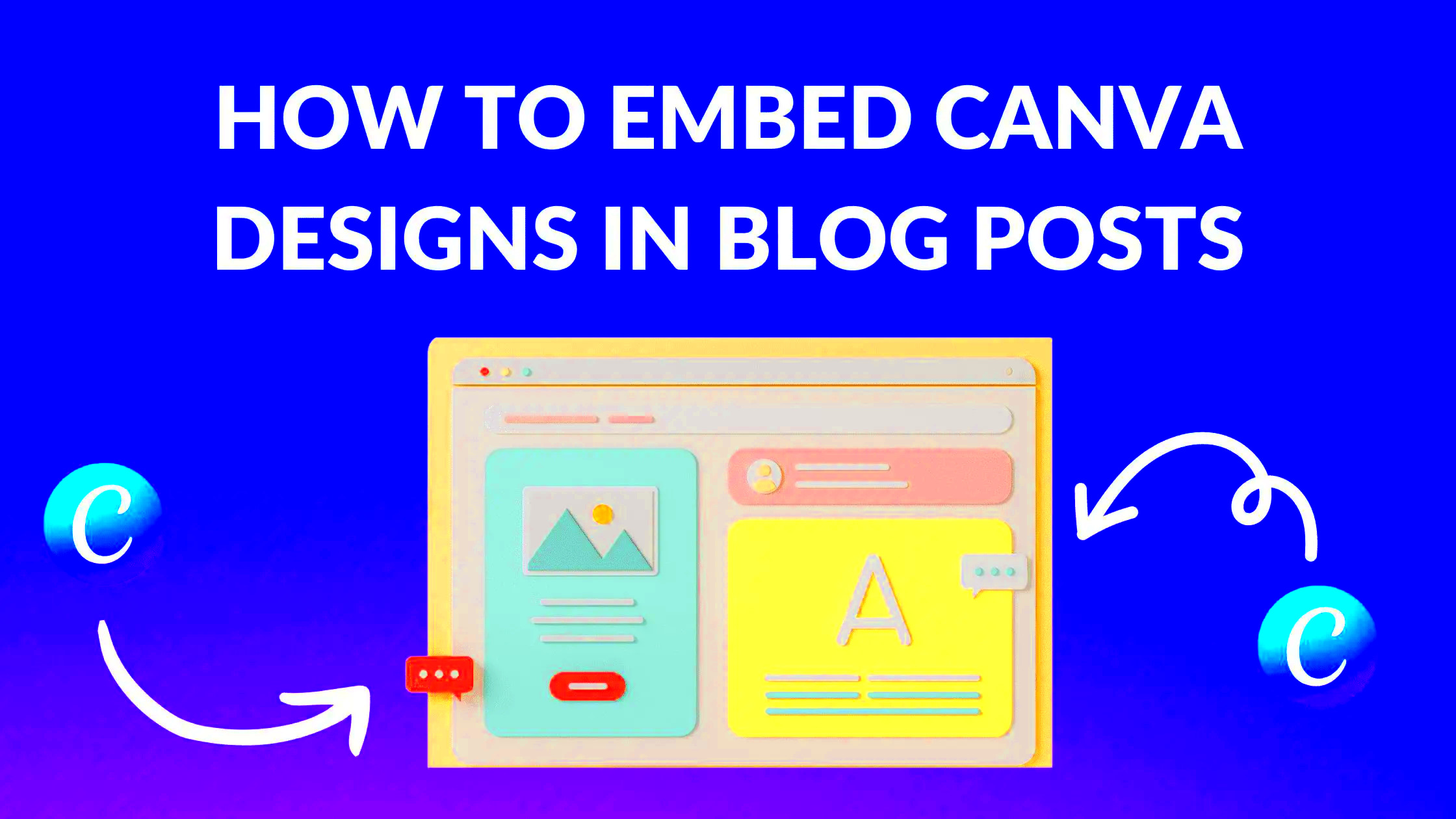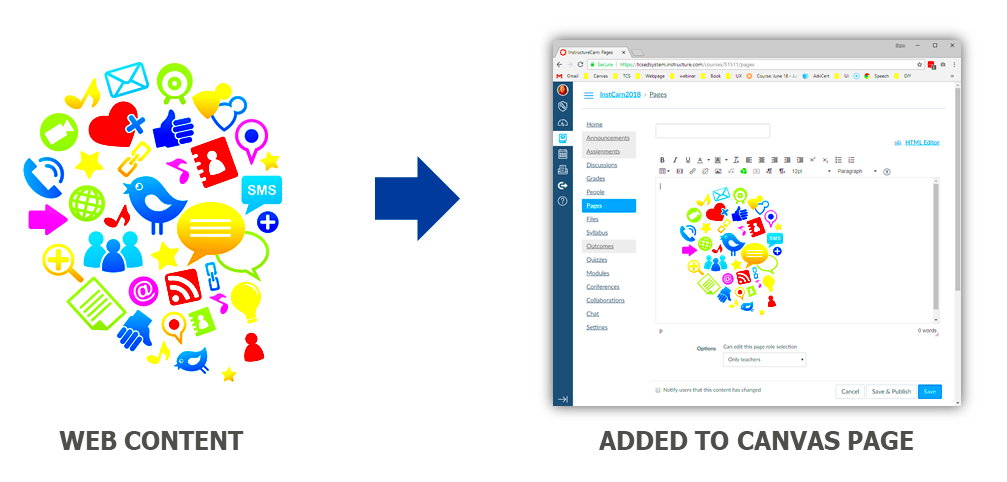Canva has transformed how we view design making it accessible to all, whether you're a pro or just starting out. One standout feature is image embedding which lets users effortlessly incorporate their stunning Canva designs into websites or blogs. You might be curious about what embedding really means. In essence it's like putting a window of your Canva creation right onto your platform so viewers can engage with it without having to download anything. Picture sharing your cherished vacation moments through beautifully crafted infographics or family pictures that narrate a story—embedding brings those visuals, to life.
Benefits of Embedding Canva Images

Incorporating Canva visuals into your content brings a range of benefits that can boost your digital visibility.
- Easy Sharing: With just a few clicks, you can share your designs with a broader audience, creating a more dynamic interaction.
- Consistent Updates: If you update your design on Canva, it reflects instantly wherever it’s embedded, saving you the hassle of re-uploading.
- Engagement Boost: Embedded images can capture attention better than static ones, increasing engagement on your platform.
- Accessibility: It allows users to view and interact with your designs directly, making it more accessible.
From what I recall I once included an invitation I created for a family gathering my cousins wedding. It was a success! Everyone who got the link appreciated being able to view the design instantly without having to download anything. Its those small moments of happiness that embedding can bring about!
Also Read This: How to Delete from LinkedIn
How to Embed Images from Canva

Having grasped the importance of embedding lets delve into the simple process of embedding your Canva images.
- Create Your Design: Start by designing your image or graphic in Canva. Make sure it’s exactly how you want it to appear.
- Get the Embed Code: Click on the “Share” button, select “Embed,” and copy the provided HTML code.
- Insert the Code: Go to your website or blog editor, find the HTML section, and paste the embed code where you want the image to appear.
- Adjust Size (Optional): You can modify the dimensions in the code to fit your layout better.
Its really that easy! Similar to how I incorporated my cherished recipe card that I created for a Diwali get together it simplified the process of spreading those joyful festive feelings!
Also Read This: Design Oversized Checks with Canva Big Check Template
Customizing Your Embedded Images
Tailoring your images can turn a design into an engaging creation that strikes a chord with your audience. Its not solely focused on appearance, but rather on fostering a bond. For example when I included my travel blogs photo collection I dedicated time to tweak colors and incorporate text overlays. This touch of personalization captured the spirit of each location making the audience feel as though they were present alongside me.
Here are some ways to personalize your embedded pictures.
- Adjusting Size: You can modify the width and height in the embed code. Consider your layout—do you want the image to be a focal point or part of a collage?
- Adding Alt Text: This is vital for accessibility. It describes the image for screen readers, ensuring everyone can enjoy your content.
- Incorporating Borders: A simple border can make your image stand out. Think of it as framing a beautiful picture.
- Using Call-to-Actions: If applicable, add links within your embedded images to guide your audience to relevant pages or products.
When I created marketing visuals for my sisters business these personalized touches really showcased her offerings and gave her sales a nice boost. Adding those details can truly have an impact!
Also Read This: Is 300 Mbps Internet Speed Sufficient for Streaming YouTube TV
Common Issues with Image Embedding
Though the process of embedding images from Canva usually goes smoothly you might come across some challenges. I recall my initial attempt feeling like I was maneuvering through a labyrinth! However dont worry; being aware of these problems can help you avoid wasting time and dealing with unnecessary stress.
Here are some common obstacles you may encounter.
- Broken Links: Sometimes, the link to your Canva design might break, leading to missing images. Always check your links after embedding.
- Responsive Design Problems: Embedded images may not adjust well on different devices. Test your site on both mobile and desktop to ensure everything looks good.
- Slow Loading Times: Heavy images can slow down your page. Optimize your designs before embedding to improve loading speed.
- Permission Issues: Make sure your designs are set to public; otherwise, users won’t be able to see them.
Addressing these challenges directly can enhance the experience for your audience. I realized the importance of verifying details when a friend was unable to access my blog due to my oversight in making the images public!
Also Read This: A Very Duggar Wedding and Its Cultural Impact on Reality TV
Best Practices for Using Embedded Canva Images
To use embedded Canva images well you need to think things through. Its not just about slapping an image on your site; it’s about ensuring that the image adds value to your content and resonates with your audience. Through my experiences I’ve discovered that sticking to guidelines can really impact the outcome.
Here are a few suggestions to make sure you're maximizing the impact of your images.
- Quality Over Quantity: Choose high-quality images that add value to your content. A few stunning visuals are better than an overload of mediocre ones.
- Stay Consistent: Keep your design style consistent across all images. This creates a cohesive brand identity and makes your content more professional.
- Test and Optimize: Regularly check how your images are performing. If certain designs aren’t resonating, don’t hesitate to make adjustments.
- Engage Your Audience: Use images that evoke emotions. Whether it’s nostalgia, excitement, or happiness, striking a chord with your viewers can keep them coming back.
When I incorporated these strategies into my cooking blog I noticed a significant boost in how readers interacted with my content. The recipe photos I included began to receive more feedback and shares and it was truly wonderful to bond with people over a shared passion!
Also Read This: How to Make Chocolate Popsicles – Fun Recipe on Dailymotion
Alternatives to Canva Image Embedding
Canva’s image embedding feature is great but it’s not the sole choice available. Depending on your requirements or target audience you may discover that other approaches work better for you. Being an enthusiast of exploring different tools I have come across several alternatives that cater to distinct needs. Whether you seek control over your visuals or simply have a preference for a different platform there are numerous options worth exploring.
Here are a few options you might find helpful instead of embedding images in Canva.
- Direct Image Upload: Instead of embedding, you can directly upload images to your website. This method allows for easier customization and control over how images are displayed.
- Using Google Drive: If you store your images on Google Drive, you can share them easily. Just ensure you have the right sharing settings to allow public access.
- Adobe Spark: For those looking for a more advanced design tool, Adobe Spark offers great image customization options along with embedding features.
- Imgur or Flickr: These platforms are excellent for hosting images. You can upload your designs and get a link or embed code to share on your site.
Throughout my blogging journey I’ve experimented with all these different platforms. I remember using Imgur to showcase some of my travel pictures and I was really impressed by how simple it was to share them. Taking the time to explore these choices can assist you in discovering the one that suits your individual preferences!
Also Read This: Mastering the Behance Portfolio Angle Shot for Creative Work Presentation
Frequently Asked Questions
As you start using Canva for embedding images you might find yourself with some questions. Having been in a similar position before I think it’s important to tackle these frequently asked questions to enhance your experience and make it more enjoyable.
Here are some common questions that come up:
- Can I embed images from the free version of Canva? Yes, you can embed images regardless of your Canva subscription! Just ensure your design is set to public.
- Will my embedded images affect website loading speed? It can, especially if the images are heavy. Optimize your images for the web to avoid slowing down your site.
- What if my audience can’t see the embedded image? Double-check your sharing settings in Canva. If the design is private, only you will be able to view it.
- Can I edit the embedded image after posting? Yes! Any changes you make in Canva will automatically update the embedded image on your site.
These queries bring back memories of my initial foray into blogging when I felt swamped by the nitty gritty details. Feel free to pose your own inquiries it's all a crucial aspect of the journey!
Wrapping Up Your Canva Image Embedding Journey
As we wrap up our deep dive into the world of Canva image embedding it becomes evident that this functionality opens up a wide array of possibilities for expressing oneself and forging connections. Its been an enjoyable ride, enriched with stories and meaningful takeaways. My wish is that you now feel more confident in harnessing Canvass embedding features to their fullest potential.
Keep in mind that adding images goes beyond simply putting visuals on your website. Its about enriching your content and engaging with your audience. Here are some key points to remember:
- Experiment: Don’t be afraid to try different styles and designs. See what resonates with your audience.
- Stay Updated: Keep an eye on any updates from Canva; they frequently add features that can enhance your embedding experience.
- Engage with Your Audience: Use your embedded images to tell a story, provoke thought, or inspire action.
As I conclude this chapter I find myself reminiscing about the joy of witnessing my creations take form on my blog. There’s something truly special about sharing a glimpse of your universe with the world. So why not dive into the enchantment of embedding images through Canva and let your imagination soar!
